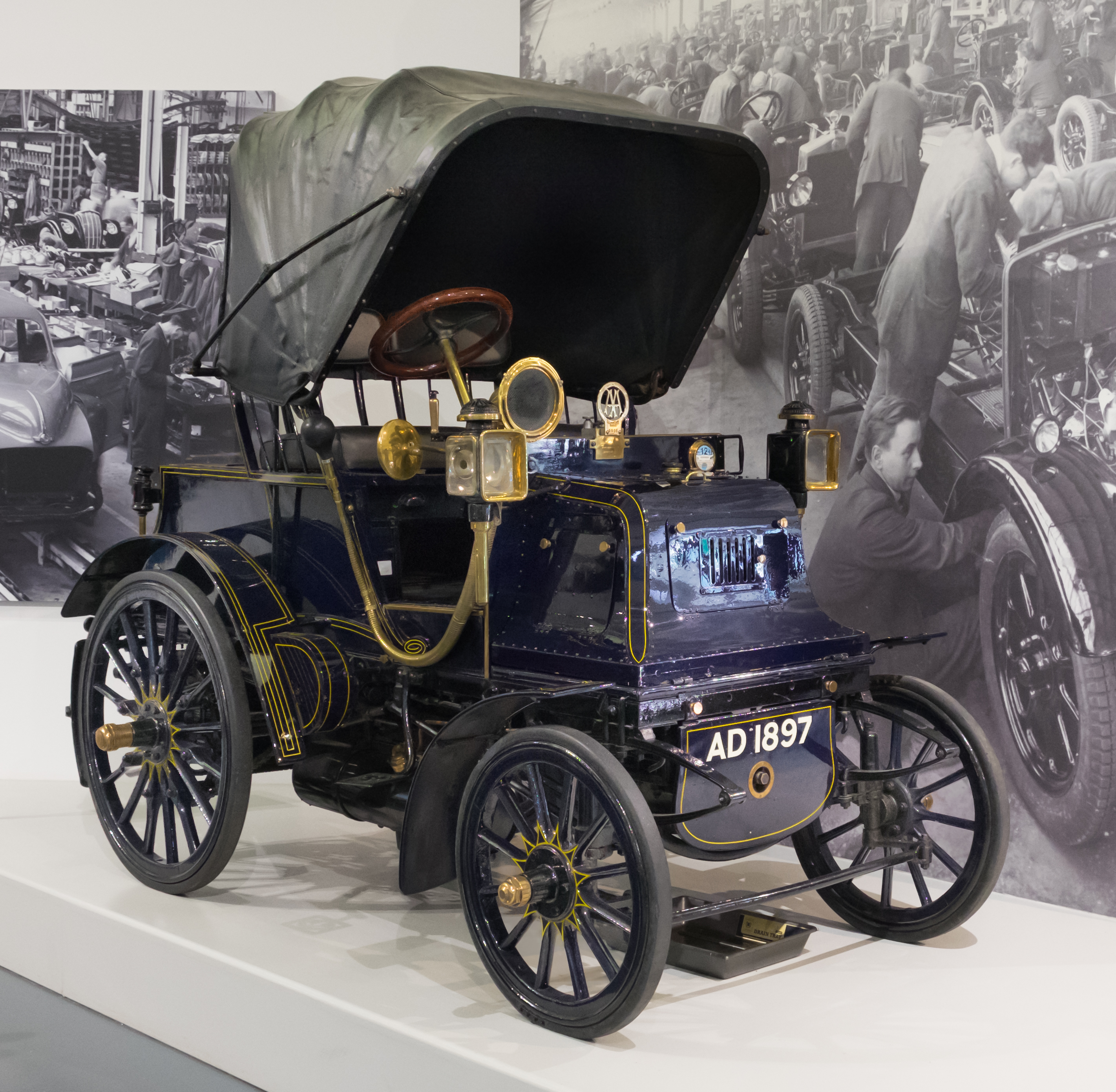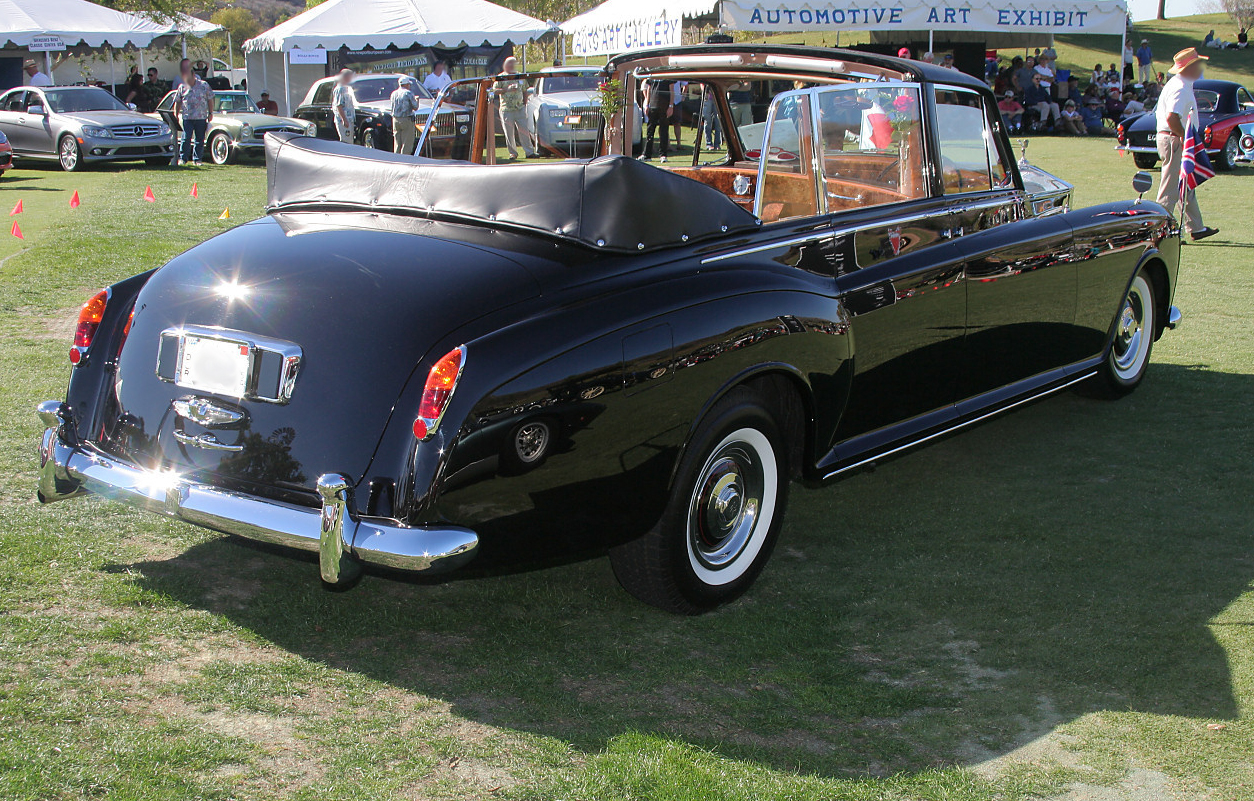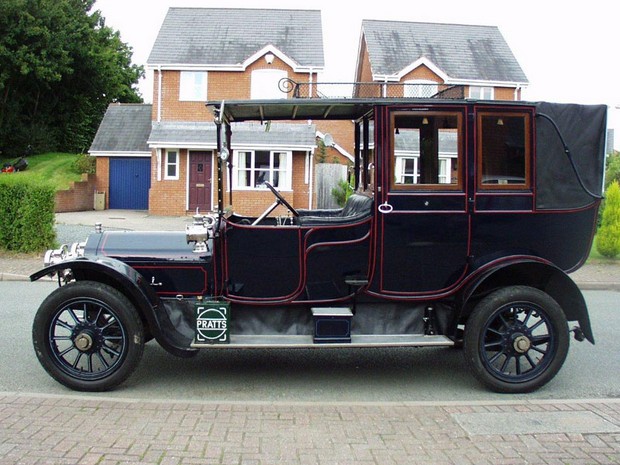|
Lion-Peugeot Type V4C3
The Lion-Peugeot Type V4C3 was a motor car produced near Valentigney by the French auto-maker Lion-Peugeot between 1912 and 1913. It was the manufacturer's first car with a four-cylinder engine. 653 were produced. The V4C3 was propelled using a four-cylinder 1,725 cm³ four-stroke engine, mounted ahead of the driver. This was the first, and till now (2012) the only Peugeot to feature a V4 engine. A maximum 9 hp of power was delivered to the rear wheels. The car was the first of several Lion-Peugeot models that became known as a Lion-Peugeot 10 hp. This was a reference to the car's fiscal horse power, applying a system of car classification for taxation purposes then being established in France. Tax horsepower then, and for several decades to come, was defined purely as a function of the combined surface area of the engine's cylinders, this being far easier to assess consistently and accurately than the actual power produced by an engine. At this stag ... [...More Info...] [...Related Items...] OR: [Wikipedia] [Google] [Baidu] |
Lion-Peugeot
Lion-Peugeot is a formerly independent French auto-maker. It is the name under which in 1906 Robert Peugeot and his two brothers, independently of the established Peugeot car business, began to produce automobiles at Beaulieu near Valentigney. In 1910 the two family auto-makers ''Automobiles Peugeot'' and ''Lion-Peugeot'' merged to form the business ''Société des Automobiles et Cycles Peugeot'', but the merged business continued to use the ''Lion-Peugeot'' name for smaller models inherited from the formerly independent business until 1916. Background To understand why there were two Peugeot automobile businesses it is necessary to refer to a family disagreement that culminated, in 1896, in Armand Peugeot leaving the family business which was called, at that stage, ''"Les Fils de Peugeot Frères" (The Sons of Peugeot Brothers)''. Eugène and Armand Peugeot, who were related to each other as second cousins, had recently taken over control of the successful Peugeot metal-worki ... [...More Info...] [...Related Items...] OR: [Wikipedia] [Google] [Baidu] |
Phaeton Body
A phaeton is a style of open automobile without any fixed weather protection, which was popular from the 1900s until the 1930s. It is an automotive equivalent of the horse-drawn fast, lightweight phaeton carriage. A popular style in the US from the mid–1920s and continuing into the first half of the 1930s was the dual cowl phaeton, with a cowl separating the rear passengers from the driver and front passenger. Phaetons fell from favour when closed cars and convertible body styles became widely available during the 1930s. Eventually, the term "phaeton" became so widely and loosely applied that almost any vehicle with two axles and a row or rows of seats across the body could be called a phaeton. Convertibles and pillarless hardtops were sometimes marketed as "phaetons" after actual phaetons were phased out. History The term ''phaeton'' had historically described a light, open four-wheeled carriage. When automobiles arrived it was applied to a light two-seater with minim ... [...More Info...] [...Related Items...] OR: [Wikipedia] [Google] [Baidu] |
1910s Cars
Year 191 ( CXCI) was a common year starting on Friday (link will display the full calendar) of the Julian calendar. At the time, it was known as the Year of the Consulship of Apronianus and Bradua (or, less frequently, year 944 ''Ab urbe condita''). The denomination 191 for this year has been used since the early medieval period, when the Anno Domini calendar era became the prevalent method in Europe for naming years. Events By place Parthia * King Vologases IV of Parthia dies after a 44-year reign, and is succeeded by his son Vologases V. China * A coalition of Chinese warlords from the east of Hangu Pass launches a punitive campaign against the warlord Dong Zhuo, who seized control of the central government in 189, and held the figurehead Emperor Xian hostage. After suffering some defeats against the coalition forces, Dong Zhuo forcefully relocates the imperial capital from Luoyang to Chang'an. Before leaving, Dong Zhuo orders his troops to loot the tombs of the Ha ... [...More Info...] [...Related Items...] OR: [Wikipedia] [Google] [Baidu] |
Armand Peugeot
Armand Peugeot (; 18 February 1849 – 4 February 1915) was an industrialist in France, pioneer of the automobile industry and the man who transformed Peugeot into a manufacturer of bicycles and, later, of automobiles. He was accepted into the Automotive Hall of Fame in 1999. Family Born in 1849 into a Protestant family at Herimoncourt, in eastern France, Armand Peugeot was the son of Emile Peugeot and grandson of Jean-Pierre Peugeot. The family had a metal working business, producing a range of practical goods such as springs, saws, spectacle frames and coffee grinders. In 1872, he married Sophie Leonie Fallot (1852–1930) and they had five children, but their only son, Raymond, died in 1896. Armand Peugeot died on 2 January 1915 in Neuilly-sur-Seine, near Paris. Education He was a graduate of the École Centrale Paris, a prestigious engineering school in France. In 1881, Peugeot travelled to England where he saw the potential of bicycles and their manufacture. Business From ... [...More Info...] [...Related Items...] OR: [Wikipedia] [Google] [Baidu] |
Landaulet (car)
A landaulet, also known as a landaulette, is a car body style where the rear passengers are covered by a convertible top. Often the driver is separated from the rear passengers by a division, as with a limousine. During the first half of the 20th century, taxicabs were often landaulets, with models such as the Austin 12/4 and the Checker Model G and early Checker Model A being a common sight in larger cities. Around the middle of the 20th century landaulets were built for public figures such as heads of state to use for formal processions or parades when they wished to be more visible to large crowds. Open cars are now less frequently used, due to security concerns. History The car body style is derived from the horse-drawn carriage of similar style that was a cut-down (coupé) version of a landau. In British English, the term ''landaulet'' is used specifically for horse-drawn carriages, and ''landaulette'' is used when referring to motor vehicles. Like many other car ... [...More Info...] [...Related Items...] OR: [Wikipedia] [Google] [Baidu] |
Limousine
A limousine ( or ), or limo () for short, is a large, chauffeur-driven luxury vehicle with a partition between the driver compartment and the passenger compartment. A very long wheelbase luxury sedan (with more than four doors) driven by a professional driver is called a stretch limousine. In some countries, such as the United States, Germany, Canada, and Australia, a limousine service may be any pre-booked hire car with driver, usually but not always a luxury car. In particular, airport shuttle services are often called limousine services though they often use minibuses. __TOC__ Etymology The word ''limousine'' is derived from the name of the French region Limousin. However, how the name of the region transferred to the car is uncertain. One possibility involves a particular type of carriage hood or roof physically resembled the raised hood of the cloak worn by the shepherds there. An alternate etymology speculates that some early chauffeurs wore a Limousin-style cloa ... [...More Info...] [...Related Items...] OR: [Wikipedia] [Google] [Baidu] |
Torpedo (car)
The torpedo body style was a type of automobile body used from 1908 until the mid-1930s, which had a streamlined profile and a folding or detachable soft top. The design consists of a hood or bonnet line raised to be level with the car's waistline, resulting in a straight beltline from front to back. The name was introduced in 1908 when Captain Theo Masui, the London-based importer of French Gregoire cars, designed a streamlined body and called it "The Torpedo". The Torpedo body style was usually fitted to four- or five-seat touring cars (cars without a fixed roof) with detachable or folding roof, and low side panels and doors. Torpedo cars did not have B pillars, so the only uprights present were those supporting the windshield The windshield (North American English) or windscreen (Commonwealth English) of an aircraft, car, bus, motorbike, truck, train, boat or streetcar is the front window, which provides visibility while protecting occupants from the elements. Mo ... [...More Info...] [...Related Items...] OR: [Wikipedia] [Google] [Baidu] |
Lion-Peugeot Type V2C3
The Lion-Peugeot Type V2C3 was an early motor car produced near Valentigney by the French auto-maker Lion-Peugeot in 1911. It closely resembled the manufacturer’s Type V2C2 which it replaced. 520 V2C3s were produced. The V2C3 was propelled using a two cylinder 1,325 cm³ four stroke engine, mounted ahead of the driver. A maximum 12 hp of power was delivered to the rear wheels. The car shared its 2,250 mm wheel base with the manufacturer’s single cylinder Type VC3. The 3,200 mm body length provided space for between two and four people depending on the body specified. The range of different body types offered included a Phaeton, a Torpedo, a Limousine, a Voiturette, a “Touring car” and a sports car. The V2C3 was built during the year following the formal merger of Lion-Peugeot with the “Automobiles Peugeot” business of Armand Peugeot. By this time, apart from the much smaller Peugeot Bébé The Peugeot Bébé or Baby was a small c ... [...More Info...] [...Related Items...] OR: [Wikipedia] [Google] [Baidu] |
Compact Car
Compact car is a vehicle size class — predominantly used in North America — that sits between subcompact cars and mid-size cars. "Small family car" is a British term and a part of the C-segment in the European car classification. However, prior to the downsizing of the United States car industry in the 1970s and 1980s, larger vehicles with wheelbases up to were considered "compact cars" in the United States. In Japan, small size passenger vehicle is a registration category that sits between kei cars and regular cars, based on overall size and engine displacement limits. United States Current definition The United States Environmental Protection Agency (EPA) ''Fuel Economy Regulations for 1977 and Later Model Year'' (dated July 1996) includes definitions for classes of automobiles. Based on the combined passenger and cargo volume, compact cars are defined as having an ''interior volume index'' of . 1930s to 1950s The beginnings of U.S. production of compact cars we ... [...More Info...] [...Related Items...] OR: [Wikipedia] [Google] [Baidu] |
Tax Horsepower
The tax horsepower or taxable horsepower was an early system by which taxation rates for automobiles were reckoned in some European countries such as Britain, Belgium, Germany, France and Italy; some US states like Illinois charged license plate purchase and renewal fees for passenger automobiles based on taxable horsepower. The tax horsepower rating was computed not from actual engine power but by a mathematical formula based on cylinder dimensions. At the beginning of the twentieth century, tax power was reasonably close to real power; as the internal combustion engine developed, real power became larger than nominal taxable power by a factor of ten or more. Britain The so-called RAC horsepower rating was devised in 1910 by the RAC at the invitation of the British government. The formula is: : \frac where: : D is the diameter (or bore) of the cylinder in inches, : n is the number of cylinders The formula was calculated from total piston surface area (i.e., "bore" only). The fac ... [...More Info...] [...Related Items...] OR: [Wikipedia] [Google] [Baidu] |
Musée De L'Aventure Peugeot
The Musée de l'Aventure Peugeot (Museum of the Peugeot Adventure) is a historical museum devoted to the Peugeot automobile business. The museum was founded by members of the Peugeot family, opening in 1988 across the road from the company's huge industrial site at Sochaux. The first Peugeot automobiles emerged in 1891. The museum presents a global view of the evolution of the Automotive industry virtually from its beginning. Peugeot products with longer pedigrees including bicycles are also represented along with the company's long history as a manufacturer of domestic articles and tools. The museum is planning to welcome 85,000 visitors in 2010 ''(2009: 75,000)'' including approximately 25% from outside France. In the longer term the museum is set up to welcome 90,000 – 100,000 visitors annually, a rate approximately 25% ahead of the 1.6 million visitors recorded in total between 1988 and 2008. History In 1982 Pierre Peugeot, who at the time was president of the company' ... [...More Info...] [...Related Items...] OR: [Wikipedia] [Google] [Baidu] |





